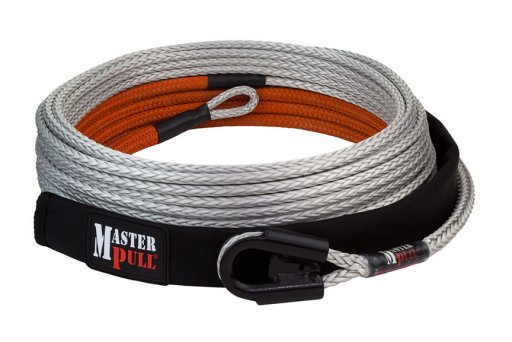AmSteel Blue from Samson was made to live in a marine environment. Salt, uv rays, engine oil, coolant etc. should not effect your synthetic winchline. It's heat and abrasion that degrades your line which should have a rock/chafe guard for protection. An 8' guard should come close to covering the last layer of rope when it's spooled onto the drum.
Sansom actually has an app for your phone that includes not only splicing instructions, but an Abrasion Guide. It illustrates 7 varying levels of deterioration, both internal and external, and gives their recommendation on replacement. It's important to remember that wear on the inside of your line can cause it to break, even when the outer section looks perfectly fine. Synthetic line actually flattens when under tension (almost resembling a ribbon), but it should still birdcage easily. If the individual fibers are cut or frayed, it's the cumulative reduction in diameter of the rope that determines if it should be retired or not.
Sand is probably the worst for abrasion IN your rope. Rocks are the worst for abrasion ON your rope. The grains of sand are usually bigger than dirt and can cut like glass on very small scales. It doesn't seem like much, but the high loads incurred when winching can really take their toll. The best thing to do is wash your line. You can either run it through a bucket of soapy water, or just rinse it off with a garden hose. When using the hose, spray down the concrete first to clear away the grit. Then starting from one end, spray down the length of the rope. Spraying across it can embed debris into the line, the exact thing you're trying to fix!









